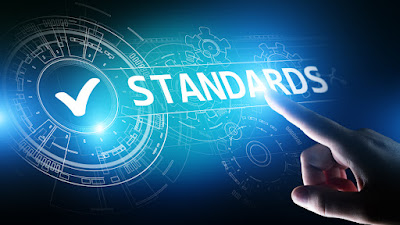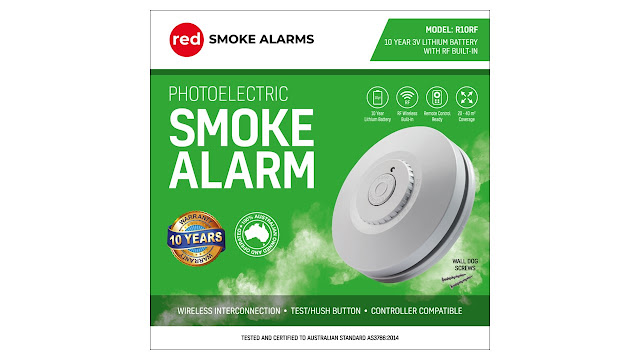Is your campervan a fire death trap?
Fire safety is crucial in a campervan as most usually have only one escape route in the event of a fire. Modern vans and motorhomes are made of highly combustible materials meaning you may have only a few seconds to escape a van which catches alight. Fires may grow rapidly, therefore receiving a warning from a photoelectric smoke detector may mean the difference between life and death. Don't risk it!
How many smoke detectors are required and where should do they go?
It is recommended that you have at least one working photoelectric smoke alarm inside the van where the bed is, and one also in the annex if you sleep there – the image below provides a handy visual guide. As per the Australian Standard, the smoke alarm(s) should also have an integrated ‘hush’ button which allows it to be temporarily silenced, should the alarm be activated due to cooking smoke etc.
where to install smoke alarms in your campervan
Am I required by law to install a smoke alarm in my campervan?
Each Australian State has different is different legislation with respect to smoke detectors in vans. In NSW, Victoria and the Northern Territory, regardless of where your campervan is registered, it must be fitted with a smoke alarm by law. If you are visiting South Australia and you are on-site for 60 days or longer then a smoke alarm is required by law. In other states fire authorities highly recommended the installation of a smoke alarm, however it is not mandated by legislation. Some states also offer penalties for non-compliance. i.e. in NSW this may include on the spot fines of $200, and up to $550 if the matter goes to court. Note the definition of ‘campervan’ is broad and extends to include the following; caravans, on-site vans, park vans, annexes (with rigid sides), mobile homes, and any other type of transportable structure where people sleep.
Recent news has further highlighted the lack of mandated alarms in Australian caravans, and fatalities due to caravan fires occur annually. Don’t allow yourself to become a story on the evening news bulletin – the short video below contains helpful caravan fire safety advice from Fire and Rescue NSW.
Tips to reduce campervan fire hazards!
Using electrical devices
Check the health of all your caravan's electrical appliances and gadgets, particularly high-load equipment by having them certified periodically by an electrician. Do not overload power leads, and protect them from exposure to natural elements such as rain ingress.
Keep gas cylinders outside the caravan
Ensure that your cylinders in the caravan are safely maintained. Ensure that the gas cylinders are always placed outside the van and switched off when unused.
To avoid gas leaks and associated fire hazards, ensure that your empty cylinders are stored in an open space and locked with a strap. Be sure to check all gas fittings and hose connections prior to each road trip as they may work free due to extended vibration when travelling.
Avoid parking in grassy areas
When parking your caravan, avoid camp sites that have tall grass as these can easily catch fire. The same applies to parking spots with spinifex growth as the same is a fire hazard. Search instead for a cleared area.
Cooking safety
Cooking while moving is one of the major causes of fire. In addition, never leave the stove unattended when cooking inside the van. Setting up BBQ too close to the campervan itself might scatter embers or increase radiant heat levels, which could cause the awning fabric to catch fire. It is good practice to always maintain a minimum 5m distance from the caravan when cooking outside to prevent caravan fires and potential carbon monoxide poisoning.
Fire Blankets
To contain a small campervan fire (i.e. on the stove top), a fire blanket may suffice. Fire blankets are made of fire resistant material. Select a fire blanket that can withstand temperatures of up to 500 degrees celcius. Place the fire blanket next to your exit door. As most fire blankets have no date of expiry, they are considered durable by full-time caravanners. Do not wait until a fire occurs before opening the fire blanket for the first time – practice beforehand so you are familiar with it, and learn the correct technique to place it over a small fire without burning yourself in the process.
Have fire extinguishers at the ready
Second only to a smoke alarm, the next most important item to prevent fire from spreading is a dry chemical powder (DCP) fire extinguisher. Make sure your extinguisher is effective at all times by ensuring it remains fully charged and is within its use by shelf life. Fire extinguishers should be available at an accessible location, typically adjacent to the exit route of the van.
Complete this fire safety checklist before embarking on your next road trip adventure
1) Does your campervan / caravan have a working photoelectric smoke detector, fire extinguisher and a fire blanket located near the exit?
2) Do you have an escape plan pre-prepared in case of fire? Ensure escape routes remain unobstructed.
3) Check that LPG cylinders are secured correctly to the van and that all fittings and hoses are in good working order with no leaks.
4) Have all electrical appliances been test and tagged by a qualified electrician?
5) Ensure you turn off any pilot lights before towing or when the towing vehicle’s engine is running.
6) Download the free EmergencyPlus app to your mobile phone (available for both Android and Apple). The app uses GPS functionality built into smart phones to help a Triple Zero (000) caller provide critical location details required to mobilize emergency services.
www.photoelectricsmokealarms.com.au




Comments
Post a Comment